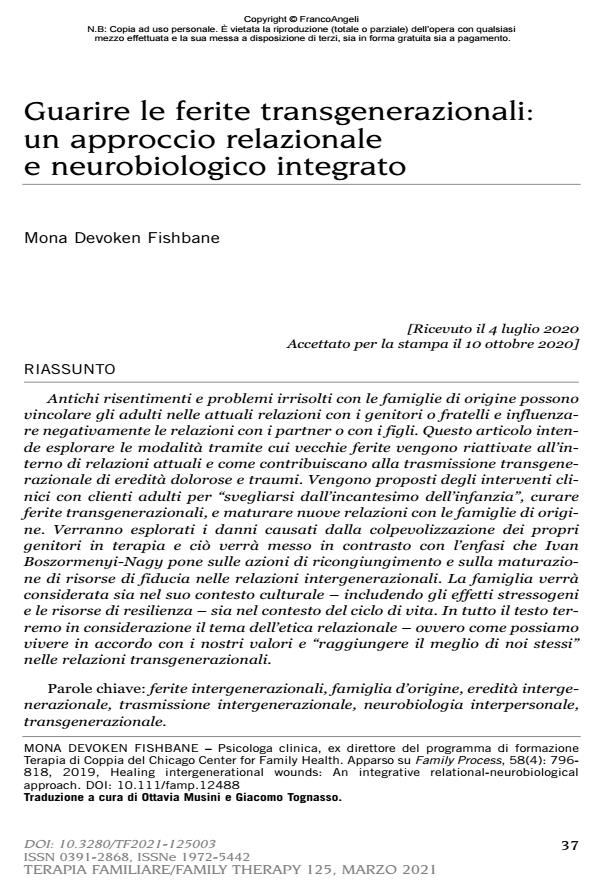Healing intergenerational wounds: an integrative relational-neurobiological approach
Journal title TERAPIA FAMILIARE
Author/s Mona Devoken Fishbane
Publishing Year 2021 Issue 2021/125
Language Italian Pages 34 P. 37-70 File size 136 KB
DOI 10.3280/TF2021-125003
DOI is like a bar code for intellectual property: to have more infomation
click here
Below, you can see the article first page
If you want to buy this article in PDF format, you can do it, following the instructions to buy download credits

FrancoAngeli is member of Publishers International Linking Association, Inc (PILA), a not-for-profit association which run the CrossRef service enabling links to and from online scholarly content.
Old resentments and unfinished business from the family of origin can constrain adults in current relationships with parents or siblings and negatively affect relationships with partners or children. This article explores how old wounds get reactivated in current relationships and contribute to the intergenerational transmission of painful legacies and trauma. Building on intergenerational family theory and interpersonal neurobiology, the dynamics of reactivity and pathways for growth are explored. While much of the time the human brain is on autopilot, driven by habits and emotional reactivity, we are capable of bringing prefrontal thoughtfulness and choice to close relationships. Rather than being victims of parents or our past, we can become authors of our own relational life. Interventions are offered to help adult clients "wake from the spell of childhood", heal intergenerational wounds, and "grow up" relationships with family of origin. The damage caused by parent-blaming in therapy is explored and contrasted with Ivan Boszormenyi-Nagy’s emphasis on rejunctive action and cultivating resources of trustworthiness in intergenerational relationships. The family is considered both in its cultural context - including stressors and resources for resilience - and in its life cycle context. Aging in the intergenerational family is discussed, focusing on ways adult children and their parents can grow and flourish with the challenges at this time of life. Throughout, the theme of relational ethics - how we can live according to our values and "reach for our best self" in intergenerational relationships - informs the discussion.
Keywords: Intergenerational wounds, family of origin, intergenerational legacies, intergenerational transmission, interpersonal neurobiology, intergenerational.
Mona Devoken Fishbane, Guarire le ferite transgenerazionali: un approccio relazionale e neurobiologico integrato in "TERAPIA FAMILIARE" 125/2021, pp 37-70, DOI: 10.3280/TF2021-125003